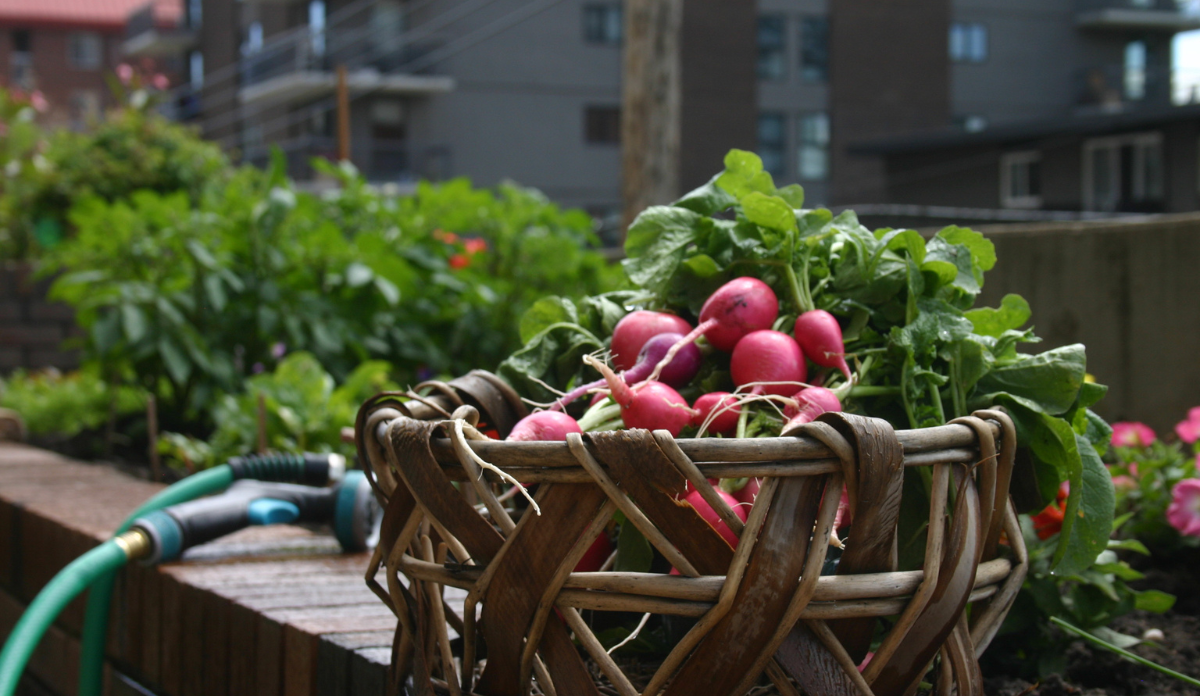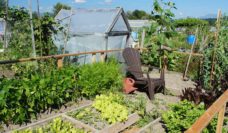I live by a park where neighbors can rent small garden plots. In springtime, some turn their rectangles of soil into reading nooks with garden chairs and shade. Others plant flowers, herbs, and vegetables and harvest them throughout the summer and fall months. This community garden is a form of urban agriculture. Other examples include private household gardens, commercial urban farms, green roofs, and even growing herbs in mason jars on a window sill.
Urban agriculture, and urban farms in particular, have the potential to increase availability of fresh foods in places where grocery stores are scarce. But the benefits of urban agriculture go far beyond reducing food insecurity. It has environmental and social benefits, as well. Having gardens and open soil can result in less floods in cities as soil filtrates water. Urban agriculture can reduce heat islands, making cities more resilient as the climate changes. Urban agriculture has also been associated with improved air quality for communities and with providing habitats for birds, bees, and other pollinators. Urban agriculture also beautifies neighborhoods, and can result in improved mental health for individuals who work the soil and live nearby. It can help create jobs and supports community building.
Despite the many benefits of urban agriculture, not everyone is reaping them.
Kirti Das and Anu Ramaswami surveyed representative samples from New York City, Newark, and Los Angeles to understand the demographics of people who participate in urban agriculture. The team split urban agriculture participation into four categories: indoor home, outdoor home, community gardening, and a combination.
Rates of participation varied by city. In LA, 43% of participants reported being involved in urban agriculture, in Newark 31%, and in NYC 35%. Most had home gardens, both indoor or outdoor. Home gardeners were more likely to live with a spouse, have higher income, and own their homes. They were also more likely to be men.
Across the three cities, only 2% were involved in community gardens. The segment that joined community gardens were demographically diverse. The researchers argue that the low participation rates in community gardens are not surprising, because gardening takes time and resources. Additionally, most community gardens have long waiting lists, adding another barrier to entry. Another deterrent is that not all community gardens are free.
The researchers suggest that as cities expand their community gardening efforts, they should do so in a way that continues to engage diverse communities. The city of Baltimore, for example, initiated the Resident Food Equity Advisors Program, a group of diverse residents that work to develop food policy through an inclusive lens.
I do not garden in the park near my home. Membership and supplies are a bit pricey and there is a waiting list anyway. If participation was free and open tomorrow, maybe I would join. Maybe more people would too. But still, I know the community garden is there, purifying the air, reducing the chances of floods, serving as a home for pollinators, and beautifying my neighborhood. And I can enjoy all these benefits, even as a non-farming observer.
Photo via Getty Images














